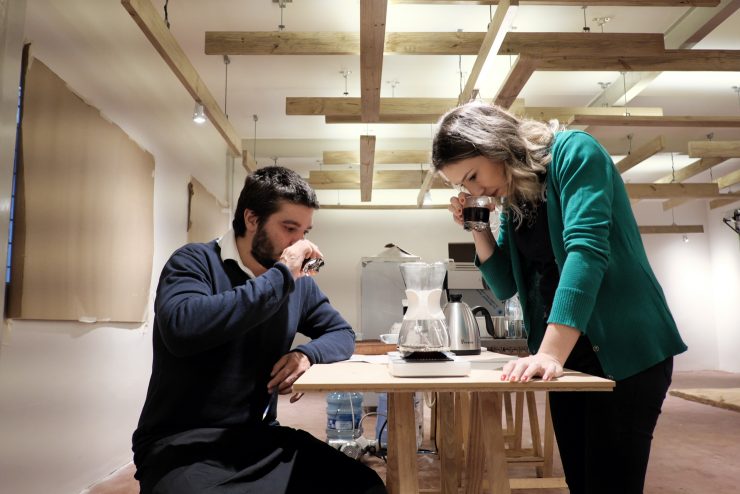
Léo Moço and Estela Cotes are a busy young couple.
Aside from having to juggle between raising their one-year-old son Bento, and managing the renovation for their soon-to-be-opened Barista Coffee Bar second location, Moço and Cotes have a third activity taking what is left of their time: training for the 2016 World Barista Championship and World Brewers Cup in Dublin.
Yes, that’s right—record keeping for this sort of thing is spotty, but we believe Moço and Cotes are the first husband-and-wife duo to represent the same country at an international coffee event. She’s the brewer, he’s the barista, and together they’re making a name for coffees from Brazil’s newly resurgent Parańa coffee growing region.
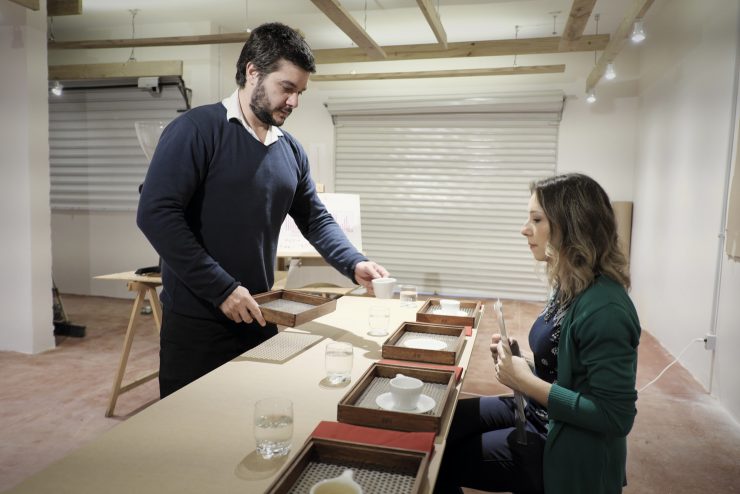
The couple live in Curitiba, capital of Paraná, in the southern part of Brazil. This city has a great coffee scene, and soon Moço & Cotes will have a much larger location for their Barista brand, where they plan to hold barista classes and center their roasting operation. Proud Curitibans, the couple plan to serve coffees from Paraná at their upcoming WBC & WBrC events. Until 1975 this was Brazil’s largest coffee producing state, but most coffee farmers from that state gave up coffee altogether after an infamous frost ruined practically every coffee plantation on July 18, 1975.
I spoke with Moço and Cotes about their key efforts to put Paraná back on the coffee-producing map, how they balance work and life together as coffee professionals, and what they see as the future for Brazil’s specialty coffee scene (and I don’t mean young Bento, although he will be growing up on the coffee bar).
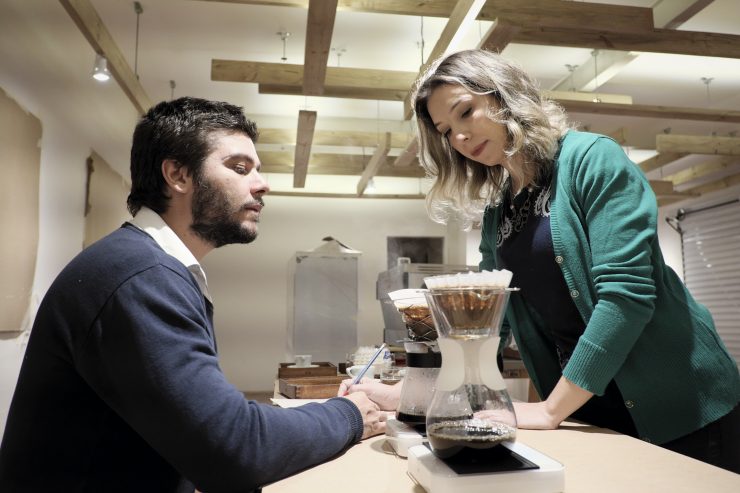
Tell us more about your efforts in Curitiba, known as the “Red Foot Project.” What is the significance of using coffee from Paraná in the WBC?
Estela Cotes: The Red Foot Project is a new coffee production protocol we are developing that aims to reach quality through processing. We believe that high-quality coffee can be produced virtually everywhere, regardless of terroir. What matters is the care in the process.
We adopted Paraná to establish our business and raise our kid. So it only felt right to us to devote ourselves to a region that was once the world’s largest coffee producer. It is the first time that Paraná is going to be at a World Championship, and with good results, we could further help small producers from here to switch from commodity mass production to specialty.
Leo Moço: I’m originally from Rio and moved to Curitiba approximately three years ago. I must admit that having lived in NYC has changed the way I see things in life because I had the opportunity to make an impact locally while living there. So, knowing the story of the state of Paraná—which in the 1960s produced a third of the world’s coffee—and taking into account how this city has welcomed me and my family, I decided that I should give it back by working with local small producers. In Brazil, everybody praises Minas Gerais and Bahia’s coffee, and now we are starting to look at Espiríto Santo, but I’m confident that in about five years we will start to look at Paraná. I see these small producers’ eyes shining with hope, I guess it’s because they did not imagine they would have so many exciting challenges ahead, and also because now they can feel they are doing something important for their families and in their lives.
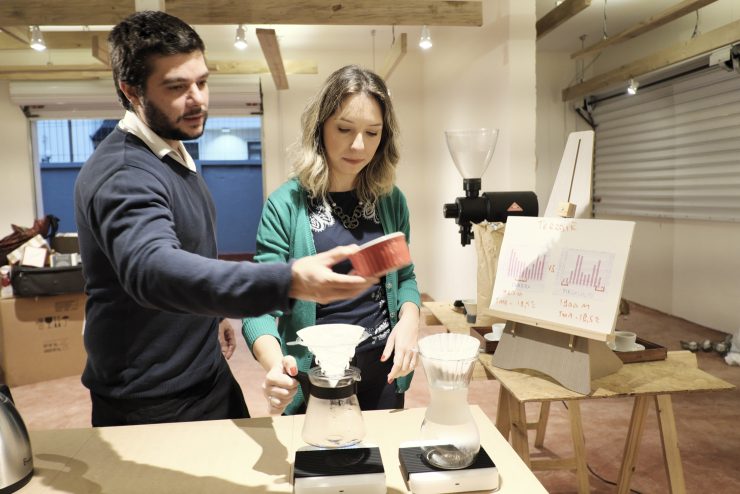
How is it to run a house and a coffee business together?
Cotes: It’s stressful! We are both going through the pre-championship tension, trying to do our best. But we always try to help each other focusing and dividing work based on our expertise.
Moço: It is as hard as any relationship, but I personally enjoy having a family business. I’m more involved in coffee sourcing, roasting, and the coffee shop’s daily operation. Estela, being a journalist, handles the marketing, commercial, and administrative operations.
How are your training regimens for the competition? Do you train together?
Moço: I believe we have a competitive advantage, which is having direct contact with the production side. Our horizon stretches to the infinite. I must confess I’m not quite fond of extraction techniques like Matt Perger’s, for example, but on the other hand, I believe it’s hard to find a barista so familiar with coffee productions daily operations. I guess the WBC is a mix of both worlds, and we are trying to focus on the technical side here as well. We do everything together and end up commenting on each other’s training efforts as well. Our routines are pretty much the same.
Cotes: We are using the space of our new coffee shop, which will open its doors in July, to train. In Brazil, harvest is starting just now, and I depend on the coffee from that harvest in order to set everything else: roasting profile, description, recipe, etc.. Luckily, in our region the first harvest happened in April. So I’m doing some tests here already—I already have pre-chosen methods and a description material, which will be fine-tuned once we get the coffee I am going to use.
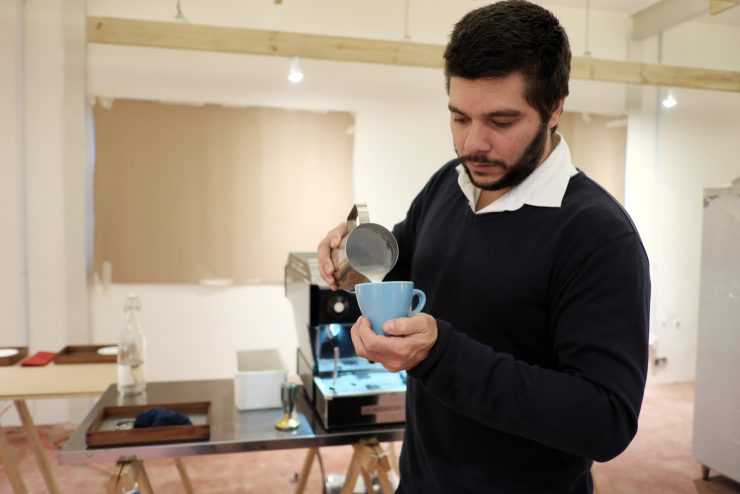
How are your experiments with fermentation going?
Moço: This is a complex question. This was my first year as a producer, so I had the chance to get creative with new fermentation processes. But it’s all just starting now. I imagine it will take around 10 years until I can describe better what I’m getting myself into…
I’ve been working with a local university here in Paraná in order to understand which specific micro-organism (in a fermentation process) will impact flavor. In one of our tests, we isolated this microorganism and then developed a new fermentation profile based on that finding. We learned a lot with that! But I try not to be too pushy when talking about these findings—the coffee world takes novelties coming from the production side with a grain of salt. There are innumerous paradigms to be broken, some to be made. In my WBC presentation, I am surely presenting something new, such as a natural coffee where we reached the peak of seed maturation, something I’ve never seen before.
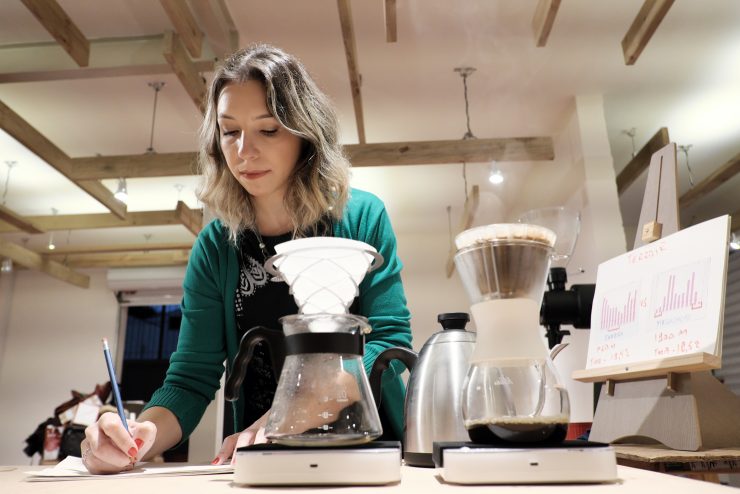
Do you think coffee opportunities for women in Brazil are growing or getting better?
Cotes: I feel that there are more women involved in coffee production than in the barista side here in Brazil. I am part of some discussion groups on Facebook and WhatsApp where we showcase examples of women who took over their families’ lands and now produce high-quality coffee. We also had a quality contest that was held here in Paraná, and the three best-ranked coffees were produced by women only. I believe that little by little this is going to happen in the barista side of the process as well, especially because of women’s involvement as entrepreneurs, coffee shop owners, and so forth, such as my case.
Is there anything you want our global audience to know about Curitiba or Brazil coffee in general?
Cotes: I’d like to invite all of you to look at Brazil coffees differently. Our goal is to show that we can have coffees as complex and exotic as other renowned parts of the world. We are trying to work with small producers in our region, focusing on quality, in order to support our specialty coffee industry as a whole and move forward.
Moço: I think Estela has covered it all, I can only reinforce that idea. To me, it is frustrating to see baristas not getting interested in Brazil coffees. I can understand, yes—when I taste a Geisha, an Ethiopian coffee, it can get addictive. But believe me: Brazil is only “basic” in terms of flavor so far because we are barely starting. Just now we are beginning to look at post-harvest processes as a flavor-originator. I tell my clients all the time: Brazil coffees are going to be the Fourth Wave of coffee!
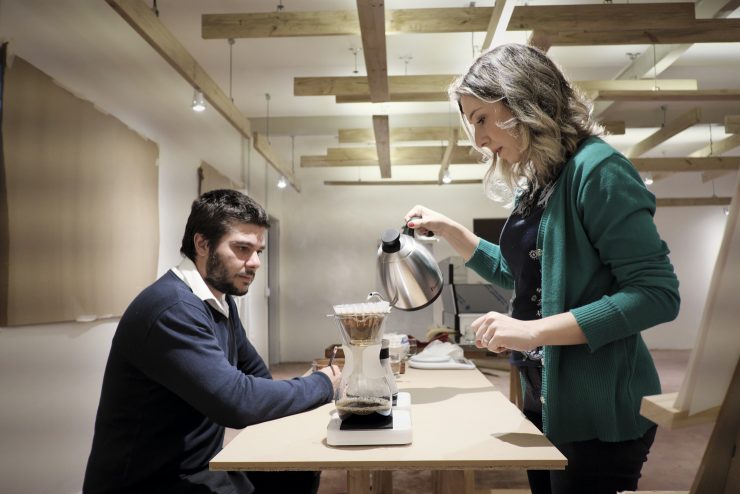
With so much attention being paid to Brazil—for good and bad reasons—right now, what is most important to you as the “first couple of Brazilian coffee”?
Moço: I am Brazilian, and I continue try to keep learning and changing as I experience other cultures around me. As I mentioned, my life has changed a lot after living in the US, and now with this work with Paraná producers I hope to enter the European and maybe the Asian market. I think I owe my contribution to my country, showing how we could change our culture and take insights from more developed societies. I always correlate other [developed] societies and how much they understand about coffee! The ones who are most into coffee are well developed and way ahead of us, so I try to change the bit that I can by deepening our knowledge around it. But to foreigners, I ask not to feel pity at us, but to look at us as an opportunity to promote this cultural change we need.
Cotes: It’s impossible not to feel the political and economic difficulties in our day-to-day lives here. What we try to do to lighten this crisis’ effects is continue to offer high-quality products in our shop and to our wholesale customers, at a fair price. I believe somehow everybody can do something to change our reality. The project we are working on with the Paraná producers, in my point of view, can really help small landholders to increase their incomes, offer more job opportunities, and thus heat up our regional economy as a result.
Juliana Ganan is a Brazilian coffee professional and journalist. Read more Juliana Ganan on Sprudge.
Photos courtesy of Diego Rilove.
The post It’s Stressful! Meet Brazil’s Husband & Wife Coffee Champs appeared first on Sprudge.

